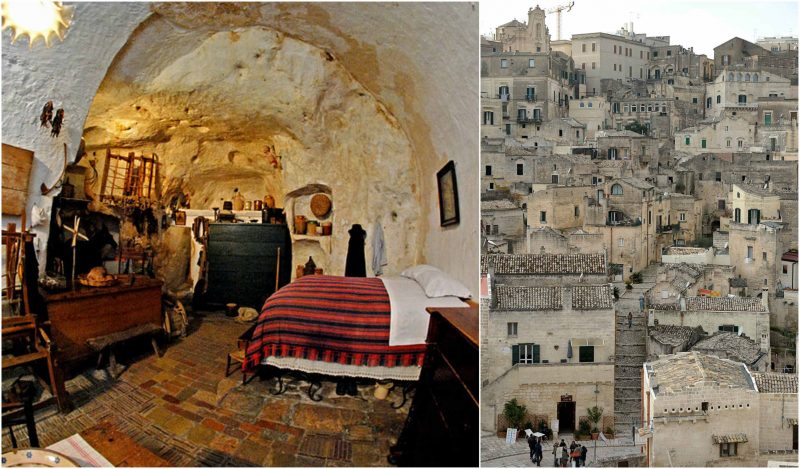One of the oldest caves in Italy dates back to the Stone Age and is considered one of the earliest forms of human settlement in Italy. The most interesting thing is that it is still inhabited by people today.
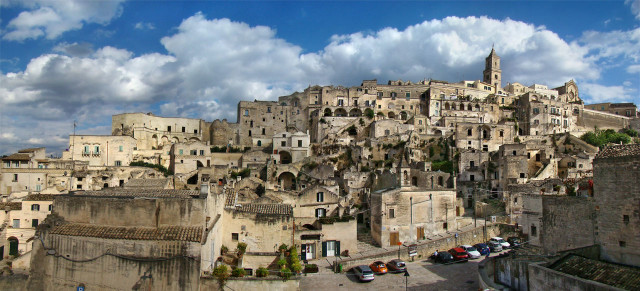
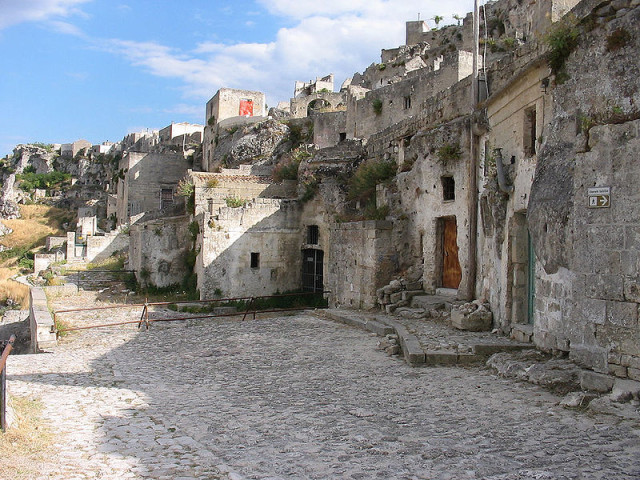
The cave reminds one of the stone homes in the Flintstones cartoon. The cave is known as Sassi di Matera; it sits on the edge of a steep ravine in the country’s south. It is believed to date all the way back 9,000 years as well as being the oldest continuously-inhabited cave city in the world. It is protected by UNESCO and is considered part of Matera city. It has been carved into the rock of a large, towering gorge that had been formed by a large river.
Matera is the only place where people can say they continue to live as their ancestors did nearly 9,000 years ago.
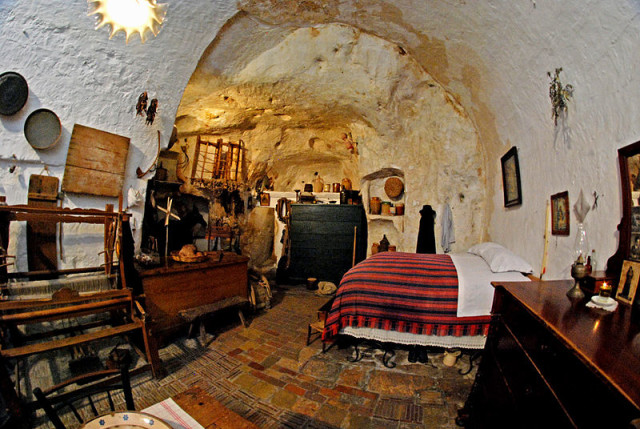
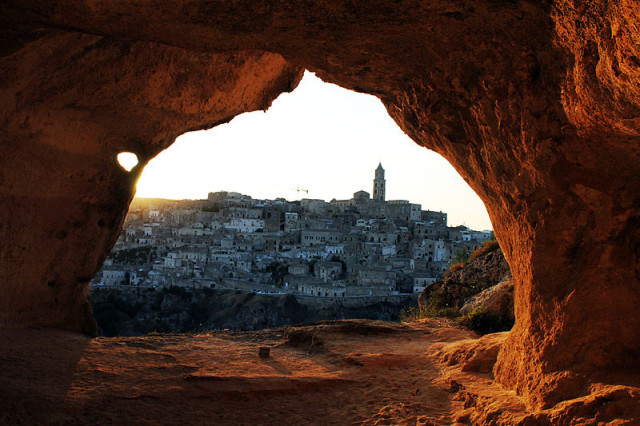
When one first glances at the Sassi sprawl, it appears to be a massive jumble of stone huts that merge into the landscape. However, if one knows about the history of the people and the caves, they will realize that there are great tales of a struggle. Up until the late 20th century, people had been living in the cave with no access to running water. There was also a lack of electricity and proper sewage facilities.
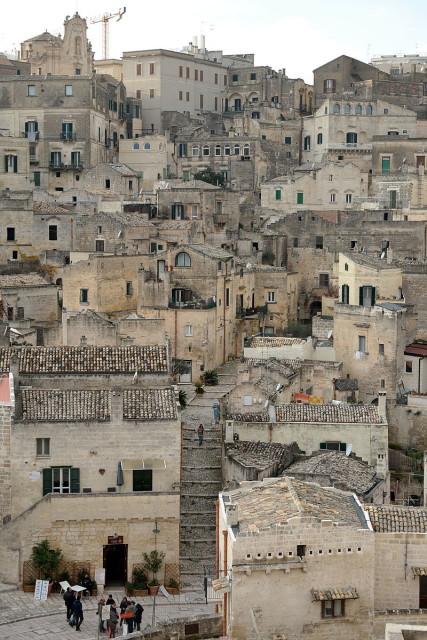
The people in the area took advantage of every single rock so that they could make many layered homes out of it. Today, there are many labyrinthine alleys and stairways. Over the years, there were new holes carved out to make room for the growing population. However, the inhabitants needed basic supplies to survive in the area, and there weren’t any within easy access.
Families would live there with their animals. The people’s diets were simple and disease was rife; malaria, especially, proved to be a major threat. After World War II, the cave residents had reluctantly moved from their crumbling stone homes into more modern homes in Matera town on the cliff.
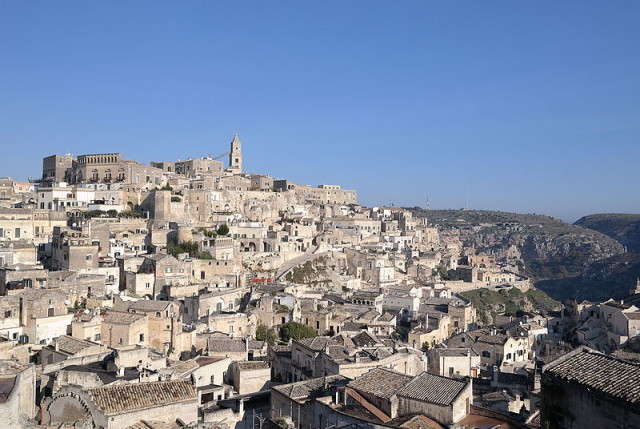
Many of the ancient chambers in the rocks lie abandoned and nearly forgotten. Thankfully, the settlement’s prospects were boosted when UNESCO named it a World Heritage site in 1993. Several of the caves in the area have been given a new life. They’ve been transformed into cozy homes, hotels, and restaurants in order to cater to the groups of tourists visiting the ancient caves. Many of the visitors are eager to find out why UNESCO was so impressed by the site. The site has also been used for several movies and TV shows, boosting the area even more.
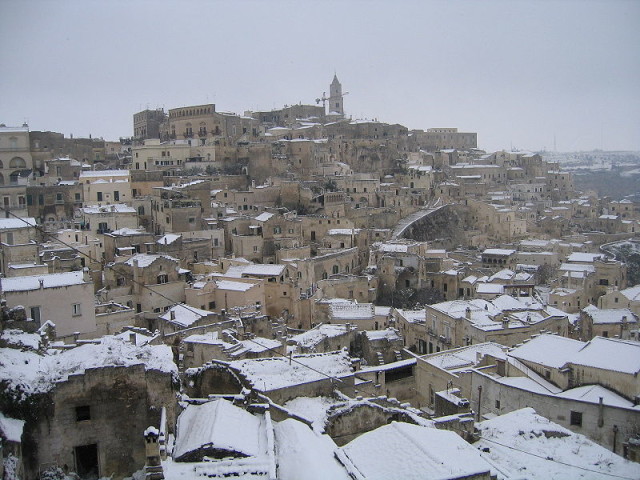
Here is a little history about the caves:
The Sassi caves originated from a prehistoric troglodyte settlement. These people are believed to have inhabited the first human settlements in Italy. In fact, there is evidence that there were people living in the area as early as the year 7000 BC.
The Sassi are houses that are dug into the calcarenite rocks that are especially characteristic of Basilicata and Apulia and otherwise locally called tufo even though it’s not volcanic tuff or tufa.
Many of the dwellings are just plain caverns; some of the streets of the Sassi are even made on top of these houses. As stated above, the ancient town had grown up on one slope of the ravine due to the presence of the large river. That particular river is now only a small stream the locals know as “la Gravina.”
During the 1950’s, the Italian government had to forcefully relocate a majority of the population living in the Sassi areas to a more developed, modern city. The caves were filled with malaria and the unhealthy living conditions were considered an affront to the new Italian Republic of Alcide De Gasperi. However, people still continued to live there despite the government’s warnings and the poor health conditions.
